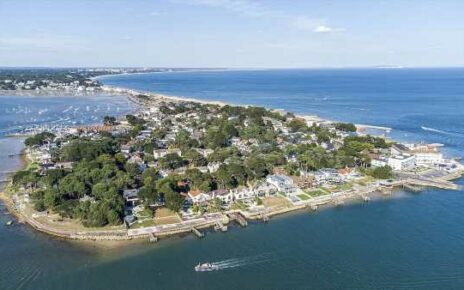FEELING a pea-sized lump in his right pec, James Richards assumed it was just muscle strain from the gym.
The last thing he expected to be told was that he had breast cancer and that it was likely to be terminal.
“I had no idea men could even get breast cancer, so it didn’t even cross my mind before someone made a joke,” the PR account director said.
“If they hadn’t said anything, I’d probably never have even gone to my GP as I thought I’d just done something lifting weights in the gym or running around at work.
“When I was diagnosed, I felt embarrassed to tell people what kind of cancer I had because it’s always viewed as a woman’s disease.
“It made me worried that people wouldn’t take me seriously as a man, especially as I’ve always been rather flamboyant.”
READ MORE ON BREAST CANCER

Breast cancer breakthrough as new robot examines and diagnoses women earlier

Faye Winter reveals secret breast cancer scare
The ordeal led to him creating moobs – the first organisation for male breast cancer in the UK.
James was just 36 when he was diagnosed with cancer on February 23, 2023, and was so dazed that he barely noticed that he had sat on an ant's nest waiting for the bus home.
He was left feeling even more isolated as all the support documents he was given were targeted at women.
One of the pieces of advice on the first leaflet he opened was “wear a loose fitting bra”, and NHS consultants spoke about how treatment had worked on women.
Most read in Health

Nutritionist shares 4 easy tips to ease bloating and burn fat fast

The 4 signs your ‘sore throat’ is dangerous – as A&E visits surge 77%

Daughter’s pain as dad, 81, kills himself after dental surgery left him in agony

Eight ways to sharpen your brain from simple card tricks to clever app
Around 400 men a year are diagnosed with breast cancer, and the disease can often be more aggressive.
Traditionally, men who get it tend to be over the age of 60, and James was referred for treatment by his GP just to be safe.
After diagnosis, he was initially offered a mastectomy, as that was the usual treatment route for women.
Doctors also didn’t know if he’d be entitled to a reconstruction on the NHS like women, as it wasn’t seen as vital.
But it turned out he didn’t actually need to undergo such invasive surgery, as male breast cancer behaves differently to the female kind.
Doctors also concluded that James’ cancer wasn’t as serious as they first thought and that his raised lymph nodes were a result of an underlying infection.
James was put onto a 20-cycle course of chemotherapy and is set to undergo a central excision on his right breast – where doctors cut out the cancerous and some surrounding flesh as well as his nipple.
“Everything made me feel like no one knew what was going on,” James told The Sun.
“I didn’t know any other men that had it, and everything I was told and given was all based around women.
“There was no one to talk to, and I didn’t feel comfortable speaking to female breast cancer survivors because I didn’t want to take away from their experience.
“Everything I was given about my cancer was aimed at females, which made it hard to process what was going on.”
I realised I couldn’t let anyone else go through what I have alone
As a result, James decided to set up moobs, because he didn't want anyone to be left feeling how he did.
It aims to provide connection to other men diagnosed with the cancer, so they feel less alone, as well as educating men to check their own breasts for any signs and symptoms.
“The numbers may sound low, but each of the 400 people have a family and a life,” James said.
“I realised I couldn’t let anyone else go through what I have alone when I had the ability to do something about it.
“Catching male breast cancer early is so important because it is more treatable.
“It’s incredible there is so much support out there for women, it’s just a shame that male breast cancer sufferers are left to feel alone and isolated.
“I don’t want someone to die because they simply don’t have the information that they could get breast cancer.”
CHECK YOUR PECS
He also hopes that he will achieve charitable status in the next 12 months and be able to help fund research into male breast cancer.
James discovered through a genetic test that he had the BRCA-2 gene, which meant he is at higher risk of developing pancreatic or prostate cancer as well.
It was yet another thing he didn’t realise men could carry.
“If someone knows there is breast cancer in their family, they should get checked for the gene, no matter their gender,” he said.
“It gives you the power to make a decision and be vigilant with your health.
“Finding cancer earlier gives you a better chance.”
James and moobs have the backing of TV doctors Zoe Williams and Amir Khan.
Dr Amir: “As the most common type of cancer diagnosed in the UK, we’re all aware of the dangers of breast cancer when it comes to women; however, often overlooked are the around 400 cases of the disease diagnosed in men.
Read More on The Sun

Katie Price’s heartbreak as son Harvey returns to hospital

I assumed tiny marks all over my son were a rash – his story could save others
“Without raising awareness of the disease – and with men anecdotally less likely to visit their GP – many of these incidences won’t be caught until it’s too late.
“We hope that moobs will help instigate change by challenging the language around the disease and encouraging men to check their pecs and book an appointment if they find anything suspicious.”
Symptoms of breast cancer in men and how to check your pecs
THE most common symptoms of breast cancer in men include:
- a lump in the breast (usually hard and painless)
- the nipple turning inwards
- fluid oozing from the nipple (which may be streaked with blood)
- a sore or rash around the nipple
- the nipple of surrounding skin becoming hard, red or swollen
- small bumps in the armpits
The NHS recommends you have a good idea of what your boobs or pecs normally look and feel like so you notice any changes and see your GP when you spot them.
You should look at your chest and feel each one, from your armpit up to your collarbone.
You may find it easiest to do this in the shower or bath, by running a soapy hand over each.
You should:
- feel around the breast in a circular motion
- feel under your arm
- feel behind the nipple
You can also look at your breasts in the mirror. Look with your arms by your side and also with them raised.
If you notice anything that isn't normal for you, speak to your GP.
This might include:
- a new lump or area of thickened tissue in either breast that was not there before
- a change in the size or shape of one or both breasts
- a discharge of fluid from either of your nipples
- a lump or swelling in either of your armpits
- a change in the look or feel of your skin, such as puckering or dimpling, a rash or redness
- a rash, crusting, scaly or itchy skin or redness on or around your nipple
- a change in the appearance of your nipple, such as becoming sunken into your breast
Source: NHS
Source: Read Full Article







